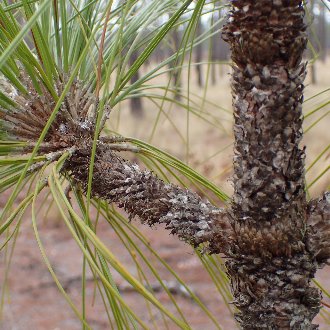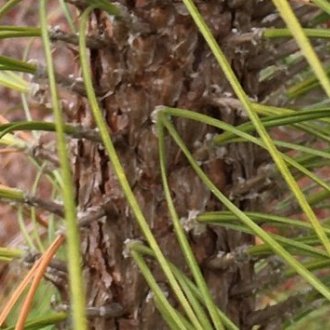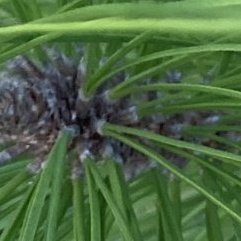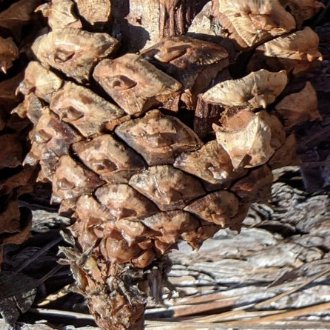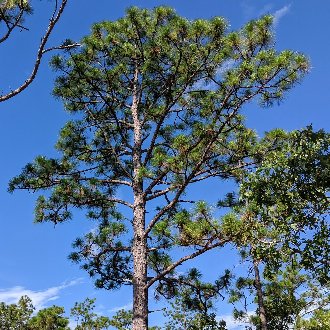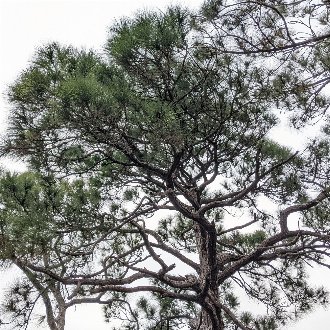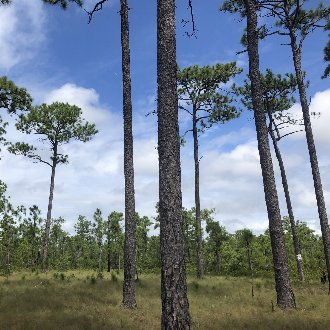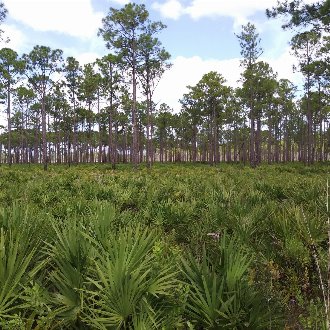Longleaf Pine vs Slash Pine
This guide is under construction and has not been published yet. It may have errors. When in doubt, double-check other sources for definitive ID.These species are easily confused, especially the South Florida Slash Pine Pinus elliottii var. densa, which looks even more like longleaf pine (Pinus palustris), also goes through a "grass stage" when young, and tends to form similar open-canopy savannas. They can be distinguished by count of needles per bundle, twig width, various characteristics of the cones, and to some degree by shape. Although the two species can grow near each other on the same site, slash pine tends to grow on wet sites whereas longleaf pine tends to grow on dry uplands.
Longleaf Pine (Pinus palustris) | Slash Pine (Pinus elliottii) |
A long-lived, fire-adapted species of pine native to the southeastern U.S., and the largest of the southern pine species, the longleaf pine has declined due to a combination of heavy harvesting for timber, slow natural regeneration, and fire suppression. | A fast-growing, short-lived pine native to mesic flatwoods and moist, poorly-drained sites in the southeastern coastal plain. |
Thicker twigs, with first-year twigs often reaching up to 2cm in diameter. Twig texture is very rough. Photo © Austin Pursley, Public Domain. | Twigs not as thick, with first-year twigs usually only reaching to 1cm in diameter. Twig texture is smoother. Photo © Kent McFarland, Public Domain. |
Needles are consistently found in bundles of three. Photo © Becky, Public Domain. | Needles may occur in bundles of 2 or 3, often with some examples of both on the same tree or even the same twig. South Florida slash pine (var. densa) is more likely to have needles in bundles of 2. Photo © Bill Michalek, Public Domain. |
Prickles on the cones are strongly curved back towards the base of the cone. Photo © Austin Pursley, Public Domain. | Prickles on cone scales are slightly thicker, and stick out straight to the side. Photo © Lila, Public Domain. |
Trunk is nearly always completely straight, even in the crown. Crown branches are mostly horizontal. Photo © Austin Pursley, Public Domain. | Trunk may be completely straight, but often becomes somewhat contorted in the crown. Crown branches are irregular and more likely to be ascending. Photo © Austin Pursley, Public Domain. |
Found in drier habitats. Photo © John Kees, Public Domain. | Found in moister habitats, including mesic flatwoods. Photo © Daniel Estabrooks, Public Domain. |
References & External Resources
These short lists show only links helpful for ID. For a complete list of references and resources also covering other aspects of ecology, visit the links section of the full article on each plant, which is the first entry here.



